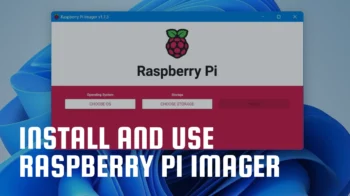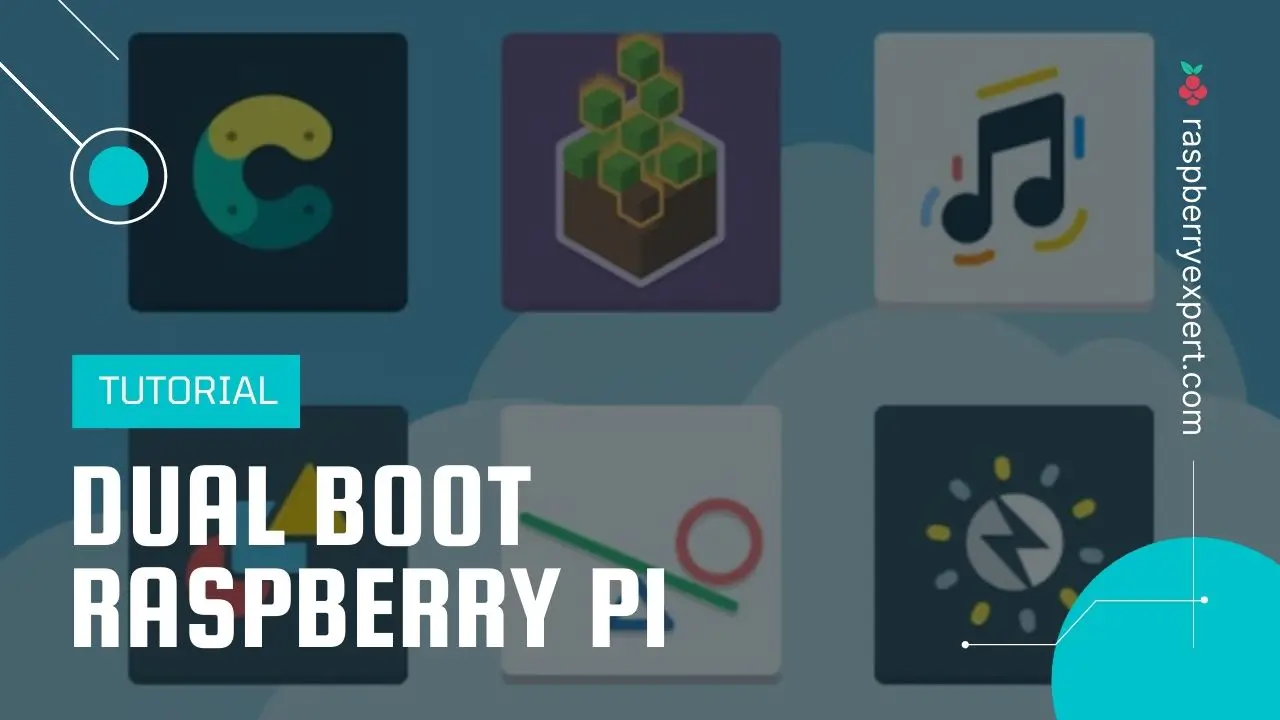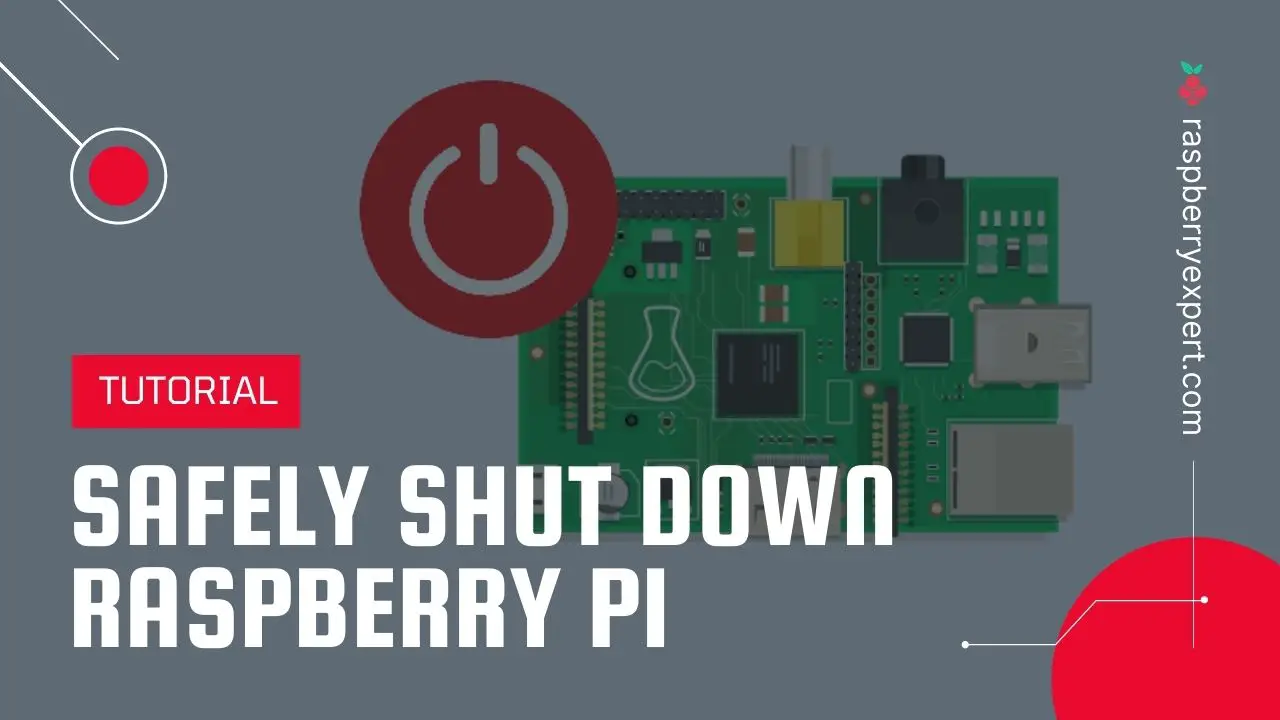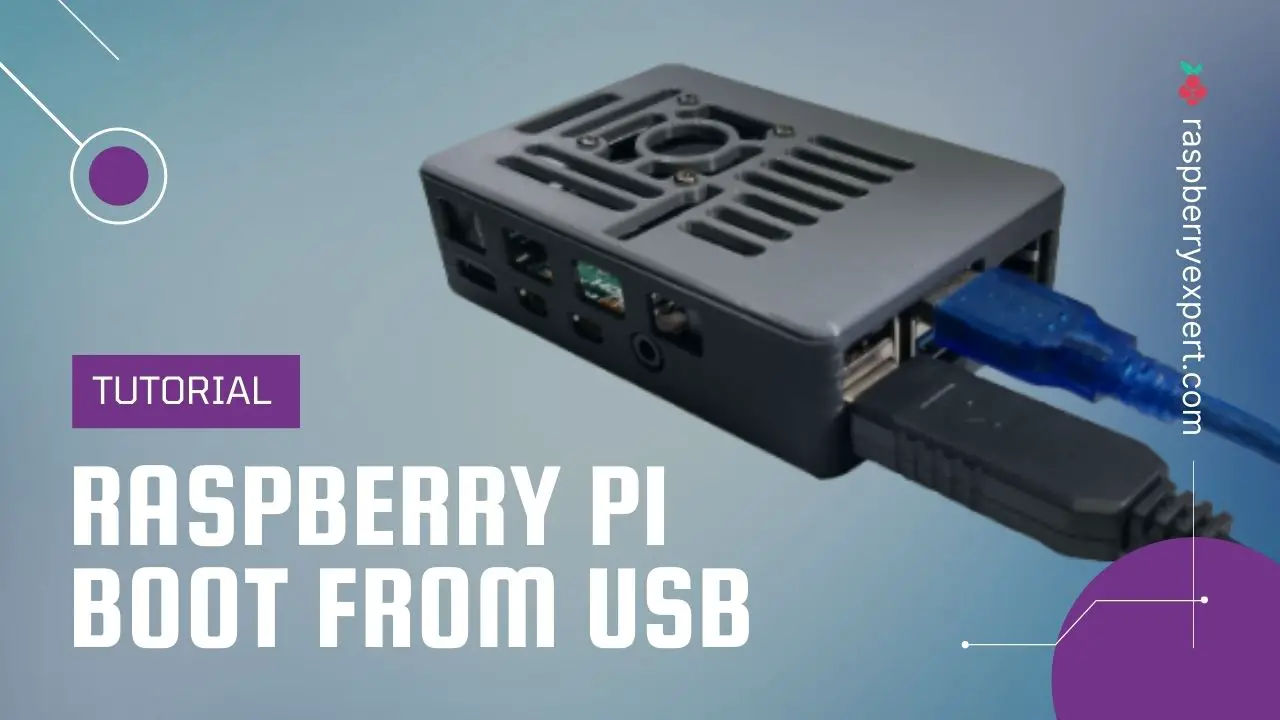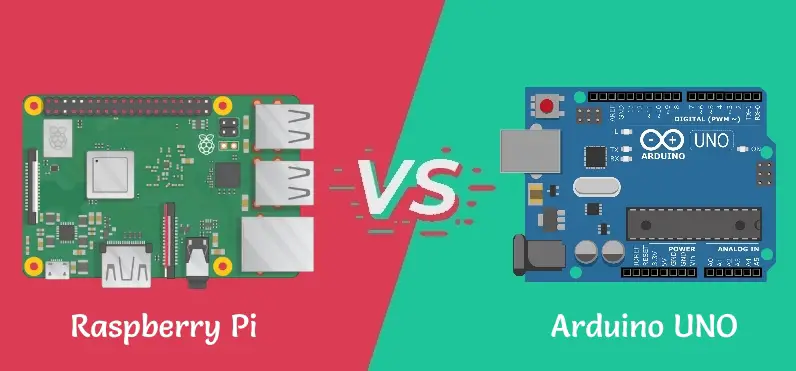
In this article, you are going to see a detailed comparison of Raspberry Pi vs Arduino. In fact, this comparison will help you choose the most suitable mini computer or embedded board for your next project. Moreover, you will get a clear-cut idea about how and why to select an SBC with correct specs like RAM, CPU, and a lot more.
Raspberry Pi and Arduino are two of the most used single board computers out there in the industry. Though they are kinds of microcomputers they are quite different in terms of capacity and other specifications. When it comes to selecting a development board or mini pc for your project it seems to be a bit confusing which one to select. To get out of this you need to know the basic differences between a raspberry computer and Arduino.
Let’s understand them in detail.
Arduino was actually invented by Massimo Benzi – an Italian open-source hardware advocate. It was a simple and cheap hardware prototyping tool for beginners. While Raspberry Pi was developed by Eben Upton from Cambridge university for improving the programming skills of his students. Then later became a revolutionary single board pc that can create simple to complex projects.
Now, starting from the core, Arduino comes with an 8-bit microcontroller while Raspberry Pi is having a 64-bit microprocessor or can be called a mini computer.
Though they are used by both beginners and hobbyists an RPi is much more complicated than the Arduino board. In terms of I/O connectivity, the raspberry board is much more sophisticated like a miniature motherboard. It’s having a wide range of connectivity options like video output, sd card port, USB 2.0 port, Bluetooth 4.2, wireless LAN, GPIO pins, and more. But in the Arduino board, these things are limited to a few. It comes with a USB B port, power input, and a set of I/O pins.
So, Raspberry Pi is a single board PC with Arduino inside it. ie., Arduino is just a part of Raspberry Pi.
Now I will show you an overview of the Raspberry Pi vs Arduino comparison. After that, I will break them down in detail.
Contents
Raspberry Pi vs Arduino
| Specifications | Raspberry Pi | Arduino |
| System | Single Board Computer (SBC) | Microcontroller |
| Operating System | Runs on an operating system | No operating system |
| Connectivity | PC based connections like HDMI, USB, SD card, LAN, etc and GPIO pins | Hardware-based connections like Power jack, USB port, GPIO, etc. |
| Storage | External storage with SD card | onboard storage |
| Data transfer | Via USB, FTP, and SD card | Via flashing of microcontroller only |
| Program execution | Multiple programs at a time | Single program at a time |
| Processor | Processor from ARM family | Processor from AVR family (Atmega328P) |
| RAM | 1 GB | 2.5 KB |
| Clock Speed | 1.5 GHz (for RPi 4 model B) | 16 MHz |
| Register | 64 Bit | 8 Bit |
| No. of GPIO pins | 40 | 20 |
| Power consumption | 700 mW | 175 mW |
| Shutdown | Should be properly shut down, otherwise, there is a risk of file corruption | No need to shutdown. Just like a plug-and-play device |
| Price | $ 35 – $ 52 | $12 – $18 |
| Pros |
|
|
| Cons |
|
|
| Areas of application | Connection with multiple devices and run multiple applications at the same time | Connection with sensors and actors to the internet and enable IoT applications |
Okay, now let’s see each one of them in detail.
#1. System
Basically raspberry pi is a single-board computer (SBC) or a pi computer and thus it can behave like a real PC or laptop on a single chip. But the case is different in Arduino. It is a microcontroller and not essentially a PC.
Raspberry has a single CPU consisting of ALU, CU, and registers. RAM and secondary storages are not an integral part of the board. ie., onboard storage is not available on RPi.

On other hand, the microcontroller on Arduino is composed of RAM, ROM, CPU, timers, etc on the board so no other external connectivity is needed for it’s working.

#2. Operating System
The Raspberry Pi uses the official OS – Raspbian which developed by the raspberry foundation and is the most used one as well. There are a plethora of other operating systems supported by RPi which focuses on several other use cases. For example, you can install ubuntu on your raspberry pi, or Windows 10 for Windows fans.
Since Arduino is a microcontroller board and not a microprocessor-based embedded system, you don’t need an OS to work with that. The code that you write is directly compiled into the machine language at the time of flashing so that you cannot modify it during the execution. If you wanna modify anything you have to re-flash the code to get it done.
So things become less flexible than the pi board.
#3. Connectivity
In terms of connectivity, it’s obvious that Raspberry wins. This is because of the fact that your pi computer board is very similar to your normal PC/ laptop’s connectivity options. There are around 40 GPIO pins which include USB ports, HDMI ports, camera, and other sensor connectors, ethernet ports, and a lot more. But the only drawback is that raspberry pi is devoid of any analog pins and thus lacks an analog to the digital conversion facility.
When comes to the Arduino, the connectivity options are a bit limited when compared to the pi computer system. It comes out of the box with only 20 GPIOs and is designed to connect different varieties of sensors rather than the advanced things that we have seen in raspberry. It has a power jack, USB port, analog pins, etc for basic functionality.
#4. Power Consumption
Since the Raspberry Pi is more or less a normal computer, it obviously consumes more power. It is around 90x faster than Arduino and the RAM is also much higher. Also, the Pi runs on 64-bit rather than 8-bit Arduino.
So it is clear that in the case of power consumption raspberry is not at all efficient but it’s not a big deal when the functionality is considered.
#5. Data Transfer
In the case of Raspberry Pi, the data is stored on an SD card whereas, in Arduino, there is no on-board storage available. The only way is to flash programs using the Arduino IDE.
As the Pi computer is having SD card storage, it opens several ways by which data can be transferred to it.
You can directly plug the SD card into your PC/ laptop and copy files as we do normally, or you can make use of the USB port on the board to transfer files from the computer. There is also another option as well, you can copy the data from the local network using an FTP program. For this, you can make use of a good FTP client like FileZilla, SmartFTP, etc.
Raspberry Pi or Arduino – How to Choose?
If you are still confused and unable to decide which board to choose, then here are some tips to get you out of it.
- Arduino is most suitable for doing repetitive tasks like switching something, door opening and closing, lighting controls, etc.
- The Raspberry Pi will help you do much more complicated tasks having multiple operations like different kinds of motion of a robotic arm, cascaded tasks, etc.
- If you want to monitor the temperature of a particular room and notify you if it crosses a certain limit, then you can go with the Arduino board. But in case you need to check more conditions like cross-checking with online reports, and receiving information from other sensors, and do things accordingly, then it’s recommended to go with a suitable raspberry pi board.
- If you are a student/ beginner who wants to start with some simple projects, the best option for you is the Arduino board.
- If you are already done some simple projects with Arduino and wanna go a little more advanced then we’ll definitely recommend going with raspberry pi.
So we hope you got a clear idea about the Raspberry Pi vs Arduino comparison. Moreover, now you will be able to decide which single board system you have to select for your next project and why.
If you are still having any queries, feel free to ask us and we’ll be more than happy to help you out. We’ll appreciate it if you can share your views in the comment section below. Your comments and suggestions are our motivation. 🙂
Found an issue with this article? Report it here, so that I can resolve it.

